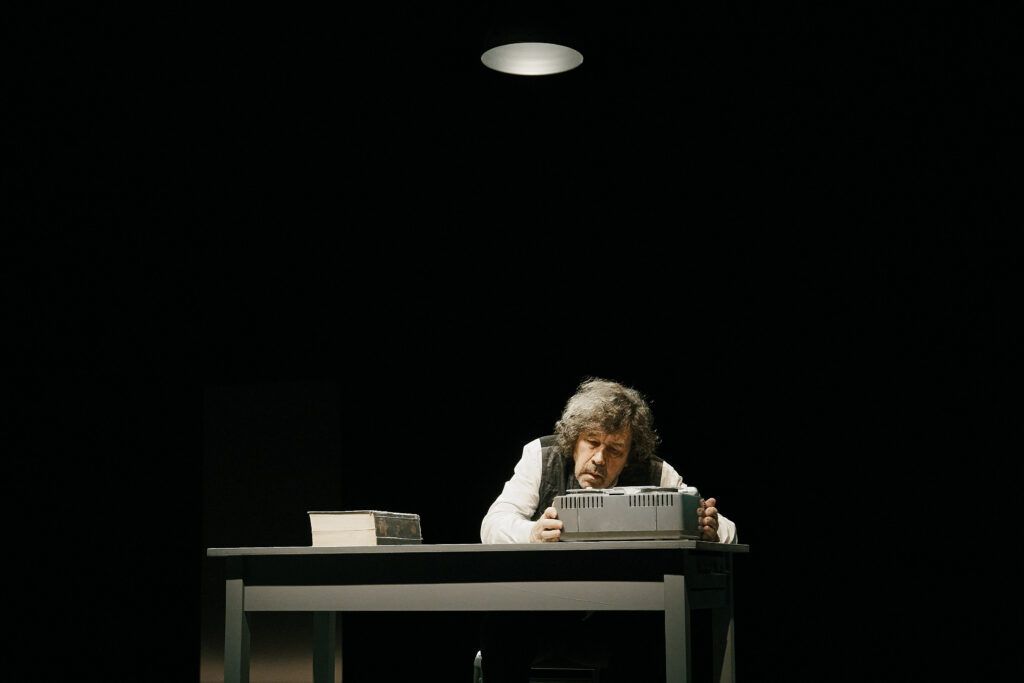For those hoping to grab a last-minute ticket to see Krapp’s Last Tape in Project Arts Centre, I can only express my sympathy as the entire run of this stellar production is sold out. Running from January 11th to February 3rd, directed by Vicky Featherstone and starring Beckett veteran Stephen Rea, the play marks the 20th anniversary of Landmark Productions’ first performance at Project Arts Centre, and is certainly more than worthy of the occasion.
Krapp’s Last Tape is one of Beckett’s best-known plays and, given its association with theatre giants of the past such as Patrick Magee, whom Beckett wrote the monologue for, the play is laden with a history of prior performances. Featherstone talked about this in a post-show discussion held on January 15th, chaired by Dr Tanya Dean, saying that she had tried to approach it as though it were a new play. Indeed, there is a freshness to the performance. Rea’s Krapp seems light and at times childlike, taking small, plodding steps as he retrieves his boxes of tapes. He lingers over “Spool! Spooool!” as though the word is foreign to him, unconvinced by his own pronunciation of it.
We see him initially respond to the plum-accented meditations of his youth with amusement. The tapes used in this production were revealed in the post-show event to have been recorded by Rea twelve years ago on the off-chance of being asked to play Krapp. When his predecessor resolves to “drink less”, he lets out a short, mocking laugh, one not so much bitter as rueful. It is only when his youthful self begins to talk about the love he has turned away from that Rea’s demeanour changes. His movements become more laboured, his voice gruffer, his face agonised. Over the course of the fifty-five-minute runtime, we watch a man age in front of us, as he reflects on a life whose choices have left him desolate and alone.
Set designer Jamie Vartan and lighting director Paul Keogan have created a superb space for Rea’s Krapp. The stage is sparse, housing only a white desk and white chair, and its barrenness serves to evoke the emptiness of the life Krapp has created. As Krapp flings objects aside, beginning with banana peels and eventually the tapes he has so meticulously recorded and preserved, the items begin to gather at the side of the stage, in shadow. We are bearing witness to a life spent throwing things away. The overhanging light illuminates the white of the desk, casting a long shadow. The audience can see even the dust which rises from the comically large dictionary, which Rea drops on the desk.
Ultimately, the performance was a triumph and an incredibly moving production. As the light dims and darkness collects, descending like a veil over the stage, the audience is finally confronted with Rea’s face, alone. Drained of all energy, he is hopeless, “burning to be gone”.








